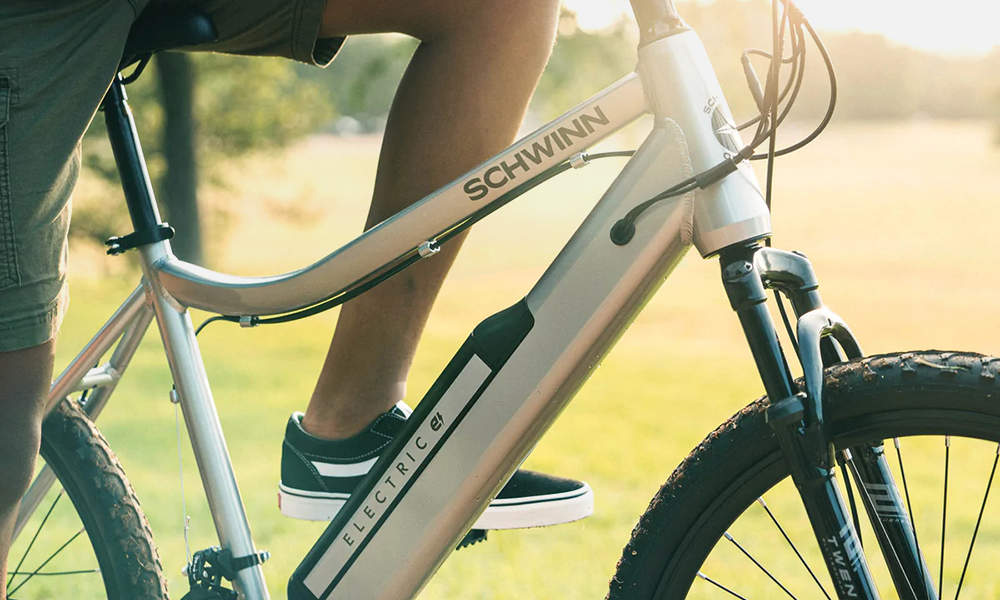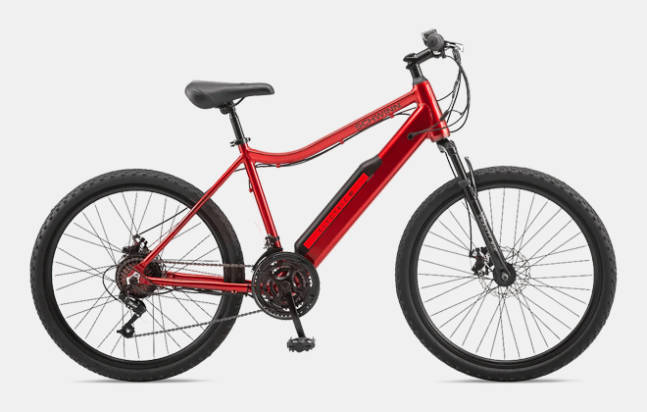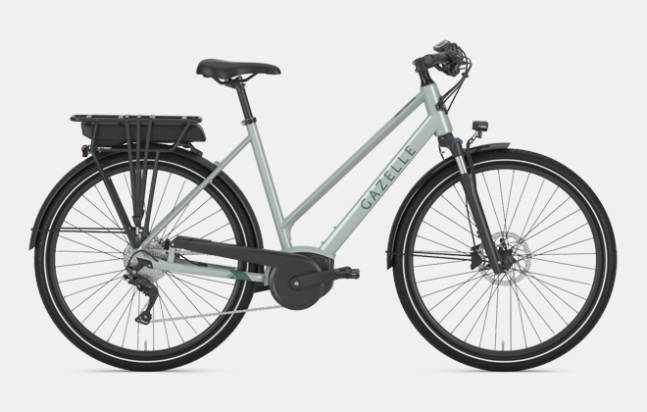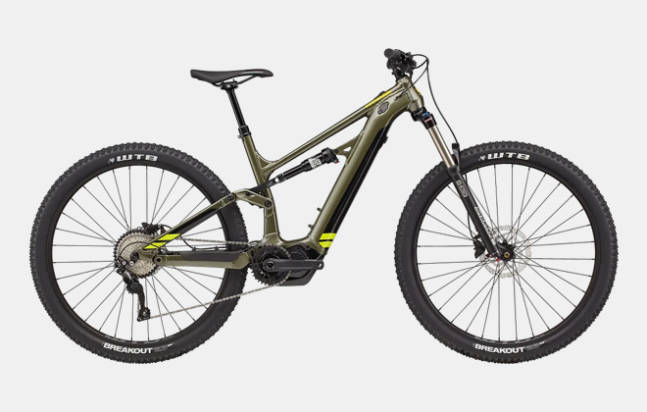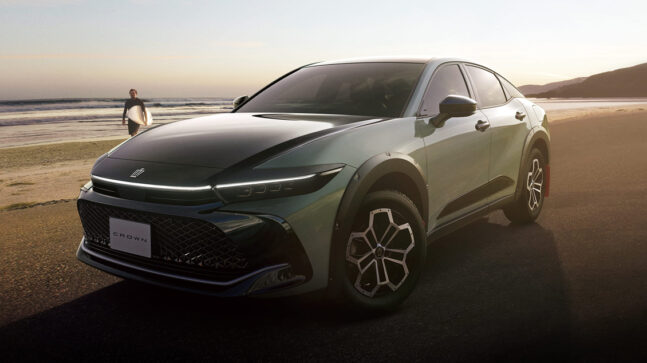Camping. Remote work. Electric bikes. Each of these activities have gotten more popular since 2020. The latter is a triple-whammy, one that moves you around in an efficient manner, gets you in better shape, and – given that many American households now spend $5,000 per year on gas – can save you a bunch of money. That explains why more people now want an e-bike than an EV, even though 78 percent have never ridden one.
These statistics offer an important takeaway: An e-bike doesn’t just cut down your gas bill and carbon footprint, but owning one also means you have a built-in group of people who have a similar interest and a built-in activity. It’s therefore not out of place to say that riding an e-bike makes you a better all-around person. In order to help you be your suavest self on-stead, here’s everything you need to know about electric bikes before hopping on.
How Much Are Electric Bikes?
Like automobiles and traditional bikes, the cost of e-bikes ranges based on factors including the brand, its intended use, and how well-equipped it is. Visit your local bike shop in autumn and you very well could find a basic commuter e-bike for $600-800 that the owner simply wants to get out the door before the season changes. Top-quality e-bikes run above $5,000, with some hitting $8,000 or more. As a first-time buyer, you want to come in somewhere in the middle. Plan to spend $1,500 to $2,500 for a good quality, middle-of-the-road e-bike that will last you for a decade or more of regular use.
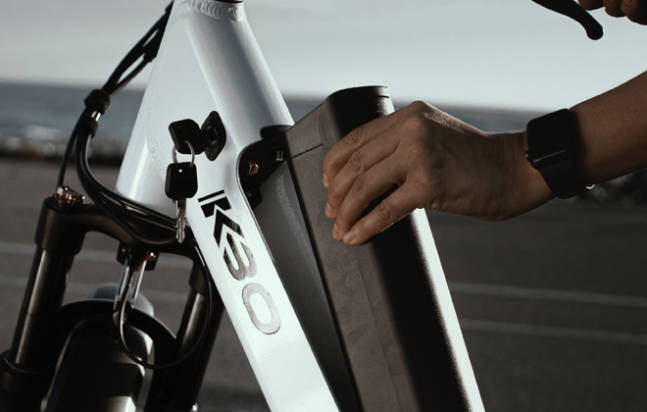
How Do Electric Bikes Work?
At first glance, e-bikes look like any other bicycle. But the defining characteristic means that they don’t act like one: There’s an electric motor that assists the rider in spinning the wheels that’s powered by an electric battery mounted somewhere on the bike itself (generally in the rear or attached to the chassis). The motor is restricted to 750 watts, but this is plenty of power to speed by traffic during a gridlocked rush hour commute.
Electric mountain bikes work the same as traditional e-bikes in that they offer battery assist. Beyond that, they’re closer to traditional mountain bikes with fatter tires, shock absorption, and a design optimized for dirt and rock trail riding rather than paved paths or roads. While they make for an easier way to ascend uphill trails, electric mountain bikes are actually prohibited on many trails, particularly those that don’t allow motorized transit. Before heading out on one, check regulations posted by your local trail operator or see the Bureau of Land Management regulations before riding on public lands. The good news is that the percentage of mountain bike trails open to electric mountain bikes is growing each year.
How Fast Can Electric Bikes Go?
Speed is where e-bikes really begin to differ from one another — and from traditional bicycles. According to regulations adopted by most states, e-bikes are broken down into three classes: Class 1, Class 2, and Class 3.
Class 1 e-bikes: Commonly known as “pedal-assist” or “pedelec” bikes, this is generally what people are talking about when you hear them refer to hybrid e-bikes. These bikes have a top speed of 20 mph, and while there’s a rechargeable battery on the bike, the rider must be pedaling for it to kick in. When browsing e-bikes at your local shop, most are likely to be Class 1, both because these are more affordable and because most people simply aren’t looking to ride over mountain passes on a regular basis. Most newer models of Class 1 bikes offer various settings of pedal assist ranging from a gentle boost to a “turbo mode” that makes climbing small hills a breeze, as long as you’re willing to pedal. If you want to commute from point A to point B with ease while still burning a decent amount of calories, a Class 1 e-bike is the way to go.
Class 2 e-bikes: This set adds a handlebar-mounted throttle to the equation. The battery still won’t push you above 20 mph, but the throttle allows the power to kick in even when you aren’t pedaling. This is a great option for commuting to work without looking like you stopped for a gym session, or fell into a puddle, on the way.
Class 3 e-bikes: Riding one of these is like driving one of those scooters in Mario Kart. The battery assist works up to 28 mph without pedaling, and the bike must have a speedometer. Most have a throttle, though some states, like California, prohibit throttles on these bikes, apparently for fear of people confusing them with a motorcycle. Either way, you can typically only ride a Class 3 e-bike on paved roads, whether you’re in traffic or in a designated one-way bike lane. The National Conference of State Legislatures breaks down each state’s regulations into a handy guide.
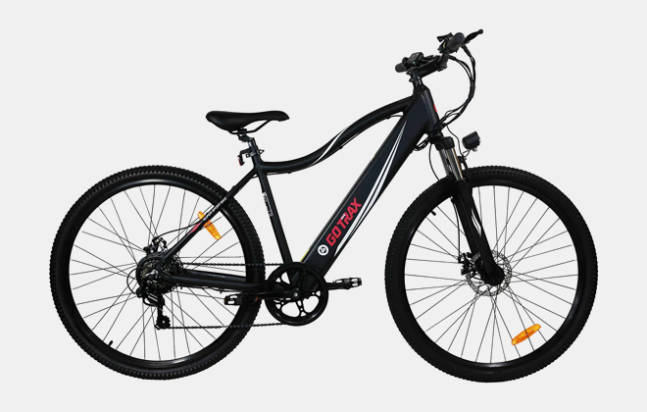
Best Affordable E-bike for Finding Your Footing: Gotrax Alpha
Cruising on the Gotrax Alpha is reminiscent of that classic bike you learned to ride on as a kid. Its thicker tires make the Alpha comfortable whether you’re riding through town or along the beachside path. You can ride up to 15.2 miles per charge and cycle between three distinct speed settings. The Alpha is ideal for running quick errands because it’s easy to lock (just use a bolt lock, not a cable and chain lock) and blends in easily with traditional bikes, saving you from stressing too much about it sitting outside while you shop.
Best E-bike for All-purpose Riding: Schwinn Healy Ridge
Officially an electric mountain bike because of its thicker tires, the Schwinn Healy Ridge is an excellent introduction to Class 2 e-bike riding at an approachable price point. The bike has an 18-speed shifter and a 25-mile range that makes it perfect for lapping mellow trails and for stopping by the brewpub afterward for a pint with the guys. Its throttle provides a welcome boost for riding home after a long day – or when you’re carting around a toddler who’s eager to get back to horsing around.
Best E-bike for Longer Commutes to Work, School, and Around Town: Gazelle Medeo T9 City
Gazelle makes e-bikes ideal for regular commuters. The Medeo T9 City is perfect for cruising bike lanes, roads, paved paths, and even smooth pebbles as long as they’re well-packed. The bike features a Bosch Active Line motor and battery pack cycles through four settings ranging from Eco to Turbo mode, and 50 mm of suspension travel up front means you can smoothly transition from pavement to dirt and back again. I’ve put hundreds of miles on my T9 City this year without incident, pushing it as far as 52 miles on a single charge.
Best E-bike for Everything on Your Agenda: Trek Townie Go! 5i EQ Step-Over and Step-Thru
Trek electric bikes are known for durability, and though they aren’t cheap, you get the tried-and-tested Trek name behind a product you’re going to drop a 4-figure amount of money on. Trek electric bikes range in price point from $1,599 to over $10,000, but the best option for the discerning e-bike commuter is Trek Townie Go! 5i EQ. The Townie Go! Is a great hybrid e-bike that comes in two varieties: the Step-Thru, with a more compact frame that’s easier to get on and off of, and the Step-Over which is a tad more high-performance and looks less like a beach cruiser. Both feature Bosch Active Line Plus System that cycles between the same four settings as the Medeo and Electra’s Flat Foot Technology that provide comfortable pedal assist to make getting around a breeze. But, you’ll still work hard enough to maintain the dignity required to call yourself a bike commuter.
Best Electric Mountain Bike: Cannondale Moterra Neo 5 – $4,550
For the experienced mountain biker ready to put an “E” in front of their “MTB” addition, the Cannondale Moterra Neo 5 is the best way to go. Dual suspension, 60 miles of range per charge, and a Shimano Deore 10-speed drivetrain make this a dependable option for easy loops and more rugged cross-country terrain. Plus, the bike’s lightweight aluminum frame means that you can actually lift it and cruise easily around tight turns even with the Shimano STEPS E7000 drive unit and battery attached.
Buy Now $4,550

